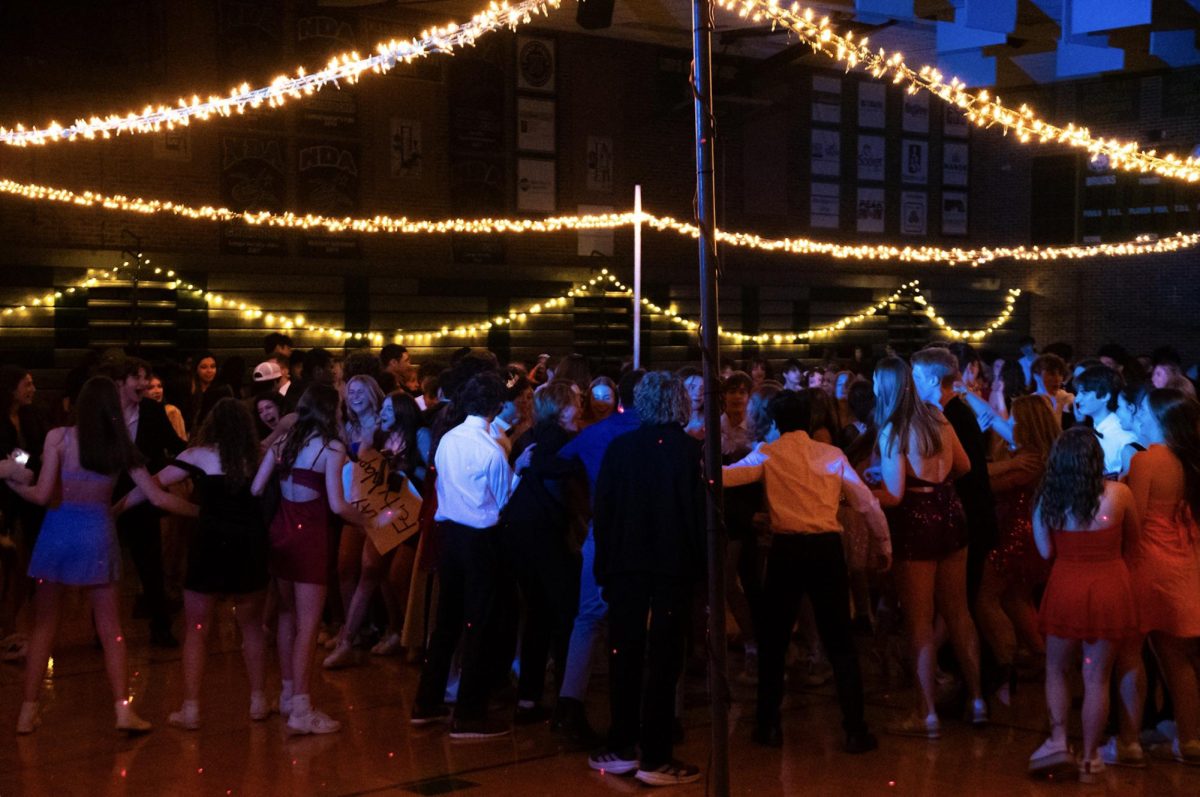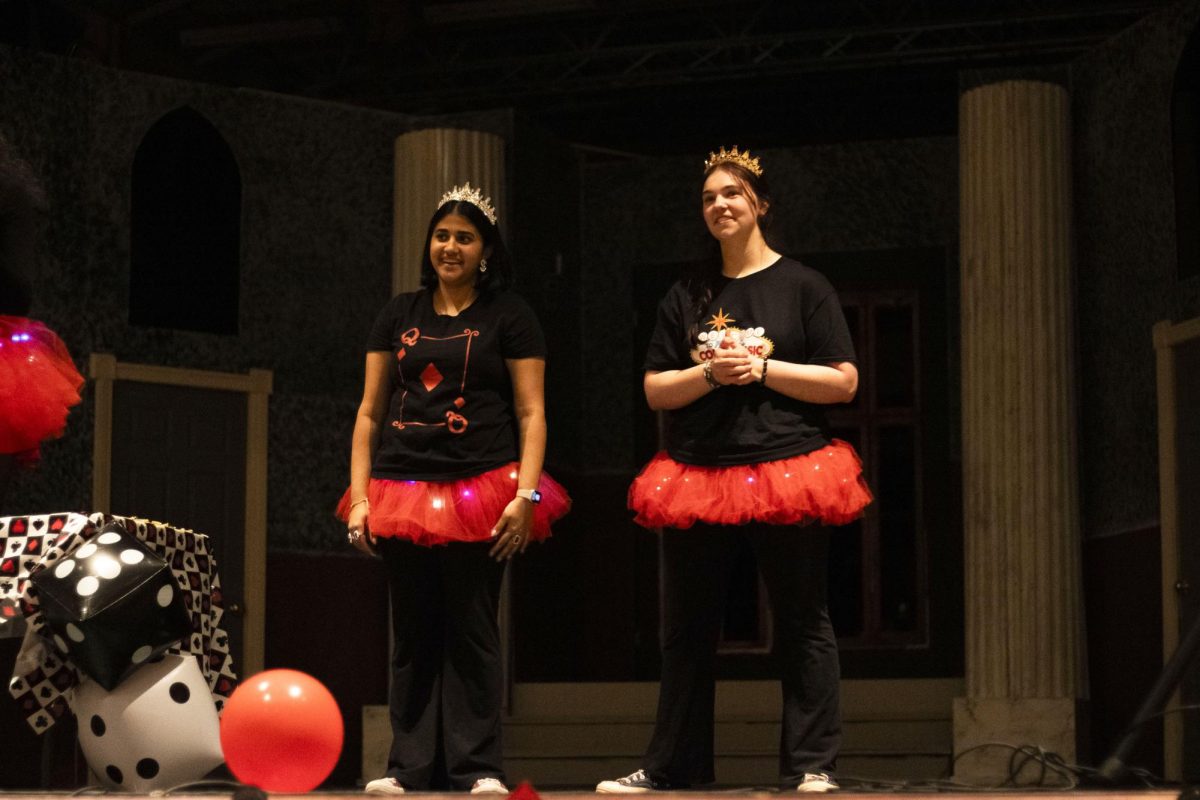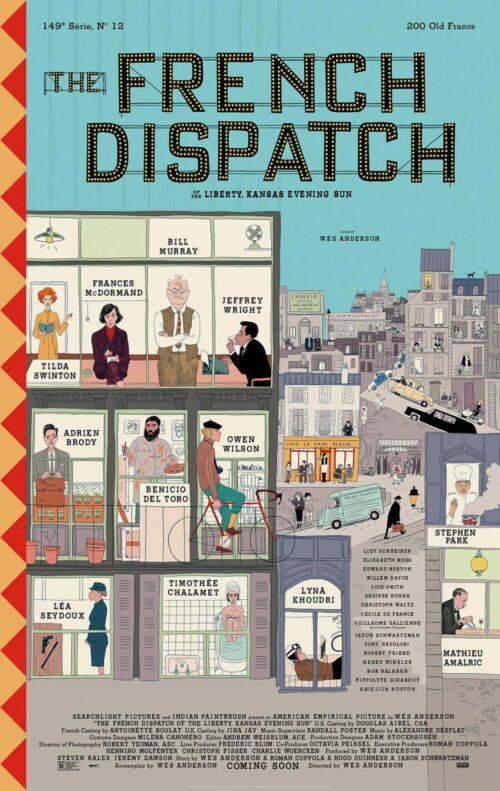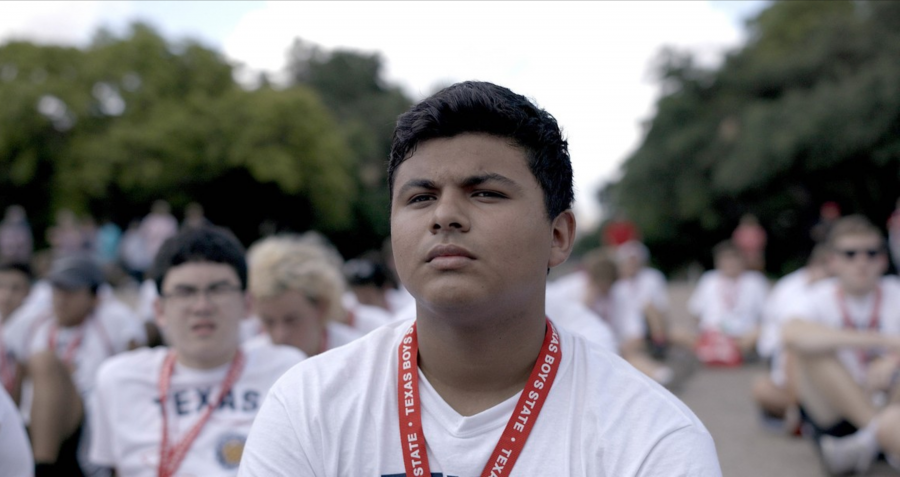Shortly after Wang Xiaoshuai’s ‘Chinese Portrait’ screened at the True/False Film Festival, March 2, Wang participated in a Q&A session. A T/F moderator and members of the screening’s audience asked Wang questions about his film. A Chinese translator was also present and helped translate the discussion.
Moderator: “What I wanted to talk about first was how I sometimes feel like the word ‘portrait’ gets used lightly and easily, but in this perspective it’s very concise in the sense that we’re looking at very strong, meticulous decided choices in terms of what we’re seeing and how we’re seeing it. And, whenever you’re looking at a portrait that’s the idea—it’s that there [are] decisions made inside [the portrait] that conveys to you what’s important. So, I’d love to know, to start, what you felt would be important for this and where you were filming and why?”
Wang: “At the very beginning, I had a friend who was a painter [who] also invited me to shoot something while he painted. We’re close friends, [so] I know that there’s nothing [worth] shooting; [it’s] only his painting—nothing. And so I think ‘Okay, you’re always a painter. You always can paint portraits with people and then after you draw the portrait it sticks forever. [A painting is] not a film. A film is always running and 180 minutes later it’s finished—but a painting never finishes. Maybe it’s a good idea [to]—like how you use a paintbrush—use my camera to do that: paint a portrait, and test how it works [with an] audience.” So this is the very beginning [of] how I [start] this film and then can’t stop. We have all these places to meet people, to see [how] their life is—and of course—that means we have a lot of people to face the camera like we’re doing a portrait.
At the very very beginning, [the film] was supposed to be shown as an exhibition. [It] was supposed to have four walls and four projectors [facing each] wall. Then, if you [went] into the exhibition room, you [would be] surrounded by the [scenes of] people staring [at] you and sounds [coming] from different places. It was supposed to be running [endlessly; the] whole day—any time of day—you [could] go in and see different frames. The first exhibition [was] at [the] Shanghai Bienniale Exhibition, and after that it was okay and I thought ‘Okay, maybe I can become a very famous modern artist, but it doesn’t work [because] people [think I am] a filmmaker—don’t come in, just get out.’
So yeah, [the exhibition] doesn’t work [and it] doesn’t travel so many places, [but] then we thought these frames, these images, [are] so interesting. It [took] a long time [to film] and [I] just [had] the memory of all of these. Then we decided…[to make the exhibition a film], but we can not call this a film—it’s [more] like postcards—[but] I [didn’t] know [what] to call it [at the time] so while we edited we decided to do nothing. Like [with] a documentary you usually have a voiceover to describe where [the filmmakers] are and what’s happening, but then [I think they’re] stupid. I think, ‘Okay, let’s go back to the pure picture. Maybe it’s a pure film.’ You can feel it—we don’t even write subtitles with something like a laughing sound. [It’s] something meaningful for Chinese people to understand; [I talk] about freedom and I just let you guess and feel it—that’s basically the idea of this film.”
Moderator: “How much of it [that] we’re seeing is something that you were seeking out and how much of it was found along the way? What were you discovering and [when] did you know ‘I want to travel to get this into the film’ and what points were you just finding things along the way?”
Wang: “It’s almost endless, but you have to face the workers or farmers from different areas of China like Muslim areas or like [Tibetan areas]—it all belongs to China. So we go out to see what happens [in those areas] for a whole day. [In] the very beginning, we used film, so [we had a] limited time, four minutes, running. So that’s [the] only chance for me, you know, only four minutes, to shoot a portrait and it’s like a painting.”
Translator: “It was all just on the way to doing other things, none of it was planned.”
Wang: “You never know [what will happen on set]. Sometimes it’s really [embarrassing when] you have some people following you and they [think] you might have some idea [about shooting] what’s happening when they follow you, but actually, you don’t have any idea. You will think ‘Ah, we’re going to this province—[such as] the Muslim province—[and] it should be very interesting and something [exciting and bound to] happen [is] waiting for us.’ Actually, life is quite peaceful [and] nothing [happens]; nobody’s expecting [me to] shoot my story. So we just go, and—for me inside—I [try] to calm down [and] don’t let them know that I don’t know what to shoot. So I just spend time to travel [and] find [something interesting]…something comes when time flies and then you see something interesting and you decided to stop here. Then, [you] try to persuade [people] to face your camera and just follow them for four minutes—that’s okay, easy. If you should film [a project] for like one month, that’s maybe a different story.
Moderator: So then how did you construct [the film] into what we saw in terms of the order of all of [the various scenes]?…it’s almost infinite, the number of ways that you [could have arranged the film]. How did you come to this arrangement?
Wang: [It was] difficult [to arrange] because at the very beginning we [tried] to cut it and, as a feature film director, I always [tried] to connect [the ‘postcards’] with some meaning [behind the decision]. Otherwise, I’m afraid [that] the audience will lose their patience—but, it’s quite stupid [to do so]. Also, the rest of you [wants] to tell a story to people but actually no, [you can’t]. So, finally we decided to have a French editor—who is a very famous film editor—[and] she will be very interested by all these images. And then I thought, ‘Okay, it might be a good idea to just throw it to [the] French people. She [has] never [been] to China, has no idea [what China is like and] just [has] the real images.’ So she also said ‘Okay, [I] don’t [see] any meaning [in each frame, so] why connect all the frames? Destroy [the connections between the frames], just like postcards. You see this [frame] first [and then] this [frame] first—it’s quite freestyle.’ So she did it [and] I think it’s okay because she will have different [perspectives on the footage than] my point-of-view because I’m Chinese and know a lot of things [about China] and she doesn’t know that [much about China]—so we decided to do this.
Moderator: “Is that one of the reasons you had a [movie] leader between the images, so that there was a real break and we wouldn’t put too much meaning between one image next to another?”
Wang: “I think it makes people think [the documentary is a] film; it looks like film. And it makes it seem like you’re coming to the end of this road, and this road is always like this and I think it works. It reminds you sometimes at the end of one minute, four minutes ‘oh, okay, next one.’”
Audience member: “How many different shots or postcards or segments were there and how many did you shoot but not put in this film?”
Wang: “Well there’s a lot. Because this time we had 80 minutes, right? And we discussed for a long time [thinking] maybe it’s too long. Who would fill in here to see all this nothingness happen? [As the audience sits] in a cinema, we’re afraid of that. Sometimes we’re told that ‘if you want to [air the film on] TV it should be only 50 minutes.’ So it’s really [embarrassing] because we have so many images and how do you decide [which ones air]? And my editor, she insisted that [the current movie] length is okay and to trust in the audience. So, at the very first screening [International Documentary Filmfestival Amsterdam] I was there with the audience to see [the film] and it works. I really followed [the film] and [was] really attracted [to] all these images. I feel happy and then I regret it—maybe it’s too short. A lot of images [didn’t’] pull [me] inside [the film and] I [fought] with [my] editor as well to say ‘ah I love that [scene]’ but he [didn’t] care.”
Audience member: “How did you instruct your subjects, particularly the ones in the foreground and children to [sit and face the camera]?”
Wang: “It’s easy, just ask them to stare into the camera. And yeah, sometimes it’s very difficult to ask people to. Like, when you’re walking in the street with a camera people will ask you ‘what are you doing?’ Especially Chinese people, they’re really stressed or [think you’re the] enemy with [your] camera like a rifle. But for me it’s like there’s nothing to tell you, you just sit there [and] stare [into] the camera [for] four minutes.
[Before posing for the camera]I thought it was a short time—four minutes. But, when I was in the frame standing [in place] for the camera it was such a long time, it was a nightmare to not move. I really feel sorry [for the film’s subjects], they did very [well].”
Moderator: “I love [the subjects standing still] as an effect because in a way you’re asking them to be still, as if it’s a still photo, but because the camera catches any motion [the scene] actually becomes quite active. Every movement becomes noticeable.”
Wang: “Yeah, this is film running, so I cannot control it as a still picture—it’s interesting. And for the exhibition, we named [the piece] ‘Waiting.’ I [think] Chinese people now [are] in a period [where they] think about change, waiting for something to happen; maybe something will change in their life. It’s just like [how] I’m waiting [and] staring at you [and] you just see me waiting till the end of the road. [The film is still] ‘Waiting,’ but I think [that title is] too political so we now just use the [new title] ‘Chinese Portrait,’ [while the film’s] Chinese name is ‘My Lens.’”
Audience member: “I was wondering for the portraits where you were in the frame, what about the locations [featured] made you want to insert yourself in [the shot] and for other locations why did you choose not to?”
Wang: “When I really [found] nothing to shoot it was easier to shoot me. I didn’t really have any specifics for why I should be [in certain] frames—but for Tiananmen Square I [thought] I should be there because it was dangerous to shoot there. There’s no way you can use a camera in Tiananmen Square because there’s so many cameras and [because of] all of the police around. [Only I] could stand there, I [persuaded] nobody [else].”
Audience member: “Speaking of [the Tiananmen shot], did you get any push back from the authorities in any of the places that you shot or did they embrace it as a really good idea?”
Wang: “No, I just didn’t let them know that I was [there]. I’m a free traveller.”
Audience member: “What did you learn while shooting and then what did you learn from the audiences [who saw the film] in terms of their reactions?”
Wang: “For the audience’s reactions: I don’t know, but I’m happy. No matter where [the film] goes, festival audiences [are interested by] the ‘postcards’ and [it has] really shocked me. I thought, because I’m a feature film director, [that] I had to tell a story inside [the film], but there’s no story inside. [Yet], maybe because of this festival [and] if [the movie] sells [in] public cinemas, maybe [audiences will] give it sh– —‘What are you doing? There’s no story, I’m going to go.’ But I think it’s a very good test, because while between making films I think the camera should be used more. Because I travel [to] so many places, if I can turn on my camera, maybe I [will] keep something. I keep changing, [but] if I [film for] another ten years [and] another ten years [and] then [look] back [the footage is] really good, [I think the camera is valuable].”
Audience member: “More of a technical question: there’s a couple of shots where the sounds seem to disconnect from the event [shown on screen]…there’s one where you hear something else going on, like dogs barking when there’s [only] sheep [shot in frame. Was this] intentional or just the environment of the film?”
Wang: “Yeah, sometimes we married [the sounds]. There are [several parts where the filmmakers and I were talking while shooting the film and] we [could have] easily cut [the excess sounds] out but I think it’s quite interesting just using it to hear [us] communicating with [the other] people. We’re just behind the camera talking [and telling our subjects] ‘Go! Go! It’s just running, don’t look at us!’—[the audio is] quite experimental. [All the sounds] belong to nature.”
Translator: “The sound was all in the scene somewhere, just not necessarily in the frame.”
Wang: “I regretted that in Tiananmen Square there [was] a police van just passing [and] we [had] just started to shoot. We rushed down to the van as [quickly] as possible [and] we started shooting. I was standing there waiting for one minute and in 30 seconds—I don’t know where they [came] from—[the van] just appears [behind] the camera, it didn’t appear in my frame. I was so [regretful], ‘Just come into my camera, let some story happen!’ [The van drivers] were very clever, just [appearing] behind me, and they caused me to stop [as they asked] “What are you doing?” So we persuaded [them] and explained [that] we were ‘Doing nothing, [just] a four-minute run.’ So this is the way we [shoot film].”
Audience member: “You said that, for a while, you might have wanted to name [the film] ‘Waiting’ and [that] you had all of these different places that you shot [only included certain scenes in the final cut]. Was there some kind of message that you are holding that made you choose what you chose and shoot what you shot?”
Wang: “[In] recent years, there are lots of pictures that appear [on] the Internet and that China [publishes of China.] And, we [know of] so many very good photographers that went to China 40 years ago, 50 years ago, 800 years ago, [but] they took a lot of pictures and we didn’t know [much about]. So when we see all these pictures…they show you Chinese people’s lives years ago. But, because of Chinese people, [and how] they don’t have that kind of concept [of taking pictures] or [have certain cameras], we lose a lot of images from our own side. Or, people just travel into China, like French people, English people, American people [and scarcely share their pictures of the area]. So, [when you see] these pictures, I believe that for photographers, when they [come] to China [they] will [be] filled with excitement to see anything, [because most don’t] know [of the meaning behind Chinese pictures, they] just keep [them]. And then, after 50 years [or a] decade, and [when those people keeping pictures] pass away, [the pictures] shows all [their] meanings—you just [have to] click [a] camera [button to preserve them].
So for me, when I [shot ‘Chinese Portrait,’] I didn’t expect it [to] so show how many inside meanings. I think after years, when you come back to see [the film it will be] full of emotions, audiences will [be] full of interest for this images—that’s what I believe.”
Categories:
Q & A with the director: Wang Xiaoshuai
March 5, 2019

Ph
0
More to Discover

















































































